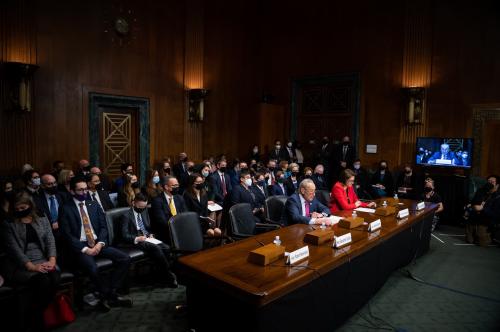A selection of charts, graphs, or maps from Brookings experts’ recent research on aspects of the 2018 midterm elections.
A Record number of women ran for and won political office
“In the 2018 elections, women played a bigger role than they have in any other election in American history,” Elaine Kamarck writes in new analysis of women candidates for office this year. She observes that 255 women from the two major parties ran for office, and a total of 106 have won (as of Nov. 7).
55 percent of candidates Trump ENDORSED won
Kamarck offers data on the number of candidates that prominent political figures—Donald Trump, Mike Pence, Barack Obama, Joe Biden, and Bernie Sanders—endorsed and campaigned for, and how many of those candidates won. Fifty-five percent of the candidates endorsed by President Trump won, and nearly two-thirds (64 percent) of candidates he campaigned for won. Yet, as Kamarck notes, the president endorsed and campaigned only in highly-Republican districts. “Consistent with his behavior since being elected,” she writes, “Trump made no effort to convert voters in this election, mostly playing to his base.”
Democrats gained among whites across gender, AGE, and education lines
“The 2018 exit polls,” writes Bill Frey, “indicate that a considerable share of Democratic gains came from shifts in white voting patterns, even as Democrats retained strong support from racial minorities.” In new analysis, Frey shows that not only did minorities–blacks, Hispanics, Asians, and other non-white groups–turn out to vote at an all-time high, but the margin between white support for Democrats and Republicans shrank by half.
Note: This blog post has been updated to correct the win percentage for President Trump’s endorsees and also to add races which were called after the initial Fix Gov post was written.




Commentary
Charts of the week: 2018 midterm elections data
November 9, 2018